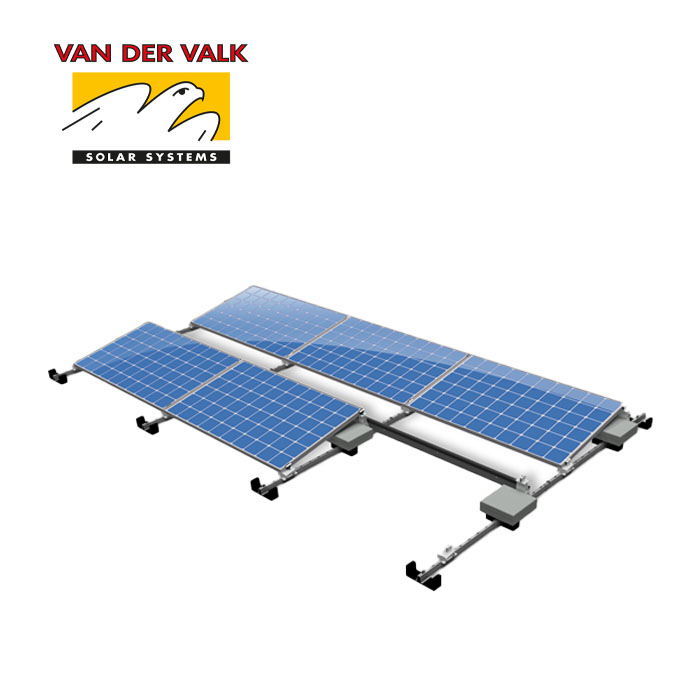Designing for All Weathers – Why Design Tools for Mounting Systems Matter
Post by Ross Purdie - Account Manager, CCL Components - 03/11/2023
 During the past few weeks, the country has been battered by a wave of storms. Regular warnings of power cuts, transport closures, damage to buildings and threats to life have been issued from Scotland to the south, and the aftermath of each storm has become a consistent feature on news broadcasts.
This week it was the turn of the Channel Islands and southern England. As violent winds lashed the region, local news reported extensive damage to roofs – including some that were completely ripped off. It puts the safety of roof-mounted solar modules very much into focus, and the TV footage is a reminder of why correct design is so important.
Thinking specifically about the design of flat roofs with ballasted mounting systems, installation designs must be completed on the specific manufactures’ configuration tools to validate the design and confirm the correct ballast requirement for each individual system. Getting it wrong may result in the array not fitting the roof space; incorrect parts being ordered; warranties being invalidated and, most importantly, a danger to property and life.
Manufacturer design tools factor in considerations such as geographical location and terrain category (city/country/coast), and take into account wind and snow zones. The tools also look at building height, proximity and height of adjacent buildings, roof covering material and the specific module layout.
During the past few weeks, the country has been battered by a wave of storms. Regular warnings of power cuts, transport closures, damage to buildings and threats to life have been issued from Scotland to the south, and the aftermath of each storm has become a consistent feature on news broadcasts.
This week it was the turn of the Channel Islands and southern England. As violent winds lashed the region, local news reported extensive damage to roofs – including some that were completely ripped off. It puts the safety of roof-mounted solar modules very much into focus, and the TV footage is a reminder of why correct design is so important.
Thinking specifically about the design of flat roofs with ballasted mounting systems, installation designs must be completed on the specific manufactures’ configuration tools to validate the design and confirm the correct ballast requirement for each individual system. Getting it wrong may result in the array not fitting the roof space; incorrect parts being ordered; warranties being invalidated and, most importantly, a danger to property and life.
Manufacturer design tools factor in considerations such as geographical location and terrain category (city/country/coast), and take into account wind and snow zones. The tools also look at building height, proximity and height of adjacent buildings, roof covering material and the specific module layout.
 The Van Der Valk ValkPro+ flat roof system allows for module placement to the roof edge. It is a low ballast system and is simple and quick to install. Another great benefit is the ballast that is supplied along with the kit. This means there’s no need to source elsewhere and you know you’re getting the correct ballast for the system - all in one delivery.
Renusol's Console+ system is one of the most convenient and easy-to-use solutions for flat roof mounting, however anecdotal evidence shows that it can be carelessly installed. The individual tubs make for an extremely quick and simple installation, and make working with awkward roof shapes with lots of obstacles possible. However, many installers seem unaware that a minimum clearance of 1.5m is required from any roof edge and the required ballast weights for each tub is specific to that install. It is definitely not a case of ‘one ballast weight fits all’.
As each seasonal storm completes its destructive path, social media fills with examples of the alarming consequences of poor design, incorrect installation and lack of maintenance, so let’s get it right from the start. If you need advice with flat roof designs, please get in touch with the CCL team and we can assist you to ensure that your designs are carried out correctly.
The Van Der Valk ValkPro+ flat roof system allows for module placement to the roof edge. It is a low ballast system and is simple and quick to install. Another great benefit is the ballast that is supplied along with the kit. This means there’s no need to source elsewhere and you know you’re getting the correct ballast for the system - all in one delivery.
Renusol's Console+ system is one of the most convenient and easy-to-use solutions for flat roof mounting, however anecdotal evidence shows that it can be carelessly installed. The individual tubs make for an extremely quick and simple installation, and make working with awkward roof shapes with lots of obstacles possible. However, many installers seem unaware that a minimum clearance of 1.5m is required from any roof edge and the required ballast weights for each tub is specific to that install. It is definitely not a case of ‘one ballast weight fits all’.
As each seasonal storm completes its destructive path, social media fills with examples of the alarming consequences of poor design, incorrect installation and lack of maintenance, so let’s get it right from the start. If you need advice with flat roof designs, please get in touch with the CCL team and we can assist you to ensure that your designs are carried out correctly.
